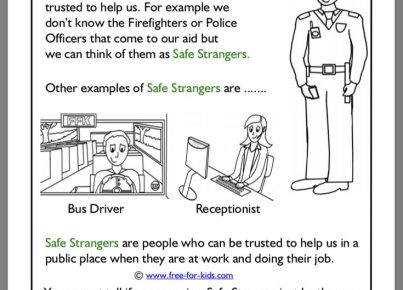Introduction:
Trauma is an unfortunate reality for many children, often causing adverse effects on their academic performance, social skills, and emotional well-being. In these difficult moments, a teacher can be a vital support system for students dealing with trauma. One teenager bravely shares her experiences with teacher do’s and don’ts when helping kids in trauma.
The Importance of Supportive Teachers:
For children experiencing trauma, teachers can be a safe haven that offers stability and reassurance. A caring teacher can make a significant difference by providing compassionate support, understanding, and guidance throughout challenging times. While the teenager who shared her experience is just one example, her insight shows the immense impact that teachers can have on the lives of students in need.
Do’s:
1. Listen empathetically – Being empathetic means being able to put yourself in someone else’s shoes. Listen patiently without judgment and allow the student to express their emotions freely without fear of criticism or punishment.
2. Create a sense of safety – Establish boundaries and predictable routines to provide consistency in the classroom. This will help students feel more secure and confident in their environment.
3. Be patient – Understand that healing from trauma takes time. Allow students to progress at their own pace without rushing or pressuring them to “move on.”
4. Educate yourself about trauma – If you see signs that something may be wrong, familiarize yourself with what to look for and reach out to appropriate school resources or professionals for assistance.
5. Encourage self-expression – Provide opportunities for students to express their feelings through various outlets such as art, writing, or conversation. These activities may act as emotional releases and foster emotional healing.
Don’ts:
1. Don’t assume you know what’s best – Each child experiences trauma differently, so avoid making assumptions about what they need or how they should handle their situation. Trust the student to know their own emotions and boundaries.
2. Don’t overstep your role – As a teacher, you’re there to provide support and guidance, but you are not a therapist or counselor. Direct the child to appropriate resources when necessary, and ensure their parents or guardians are informed if applicable.
3. Don’t ignore the signs – Dismissing warning signs could be detrimental to a child’s recovery process. If you notice a change in a student’s behavior or academic performance, address the situation carefully and with sensitivity.
4. Don’t treat them differently – Although extra support may be necessary, avoid singling out a child in front of their peers or treating them as “broken.” This can create feelings of alienation and embarrassment.
5. Don’t pressure them to share – While it’s essential to be an open ear for a suffering student, don’t pressure them to divulge details about their trauma if they are uncomfortable discussing it.
Conclusion:
The role of teachers in the lives of students coping with trauma is invaluable. By being empathetic, creating trust, and offering support when needed, educators help provide a stable environment where children in trauma can heal and thrive. By following these do’s and don’ts, teachers can better serve their students in need while also fostering an inclusive and nurturing educational space for all students.




